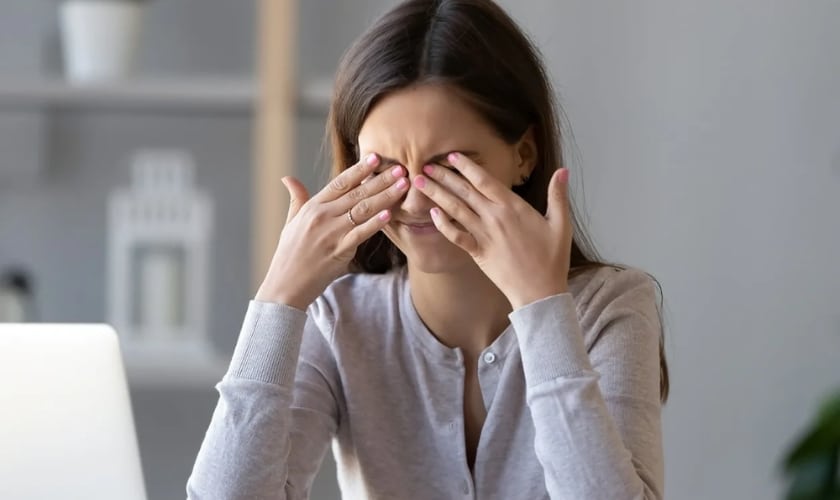Dry eyes are a common condition affecting millions of people worldwide. They can cause a range of uncomfortable symptoms, including:
- Scratchiness
- Burning
- Stinging
- Redness
- Light sensitivity
- Blurred vision
- Feeling like something is in your eye
While dry eyes can be a chronic condition, there are many effective ways to manage symptoms and achieve relief. This comprehensive guide will delve into the causes of dry eyes, explore various treatment options, and offer valuable lifestyle tips to promote healthy tear production and comfortable vision.
Understanding the Causes of Dry Eyes
There are two main reasons why you might experience dry eyes:
- Decreased Tear Production: Tears are essential for lubricating the eyes and keeping them free of debris. Tears are produced by lacrimal glands located above the eyes. Certain factors can decrease tear production, including:
- Age: Tear production naturally declines with age.
- Medical conditions: Autoimmune diseases like Sjogren’s syndrome and rheumatoid arthritis can affect tear production.
- Medications: Some medications, such as antihistamines, antidepressants, and decongestants, can have dry eye as a side effect.
- Increased Tear Evaporation: Tears consist of water, oil, and mucus. The oily layer helps prevent tears from evaporating too quickly. Here are some factors that can disrupt the tear layer and lead to increased evaporation:
- Environmental factors: Dry air, wind, smoke, and prolonged screen time can all contribute to tear evaporation.
- Eyelid problems: Blepharitis, an inflammation of the eyelids, can disrupt the oil glands and affect tear quality.
- Contact lens use: While most modern contact lenses are breathable, they can still contribute to dry eye symptoms for some people.
Treatment Options for Dry Eyes
The best approach to dry eye treatment depends on the underlying cause. Here’s an overview of common options:
- Artificial Tears: Over-the-counter artificial tears are a readily available and effective way to add moisture to the eyes. Choose preservative-free options if you experience stinging with regular drops.
- Punctal Plugs: These tiny inserts are placed in the tear ducts located at the inner corner of the eyelids. Plugs block tears from draining away too quickly, allowing them to lubricate the eye for longer.
- Lid Hygiene: Blepharitis often contributes to dry eyes. Daily eyelid cleaning with warm compresses and a gentle cleanser can help remove debris and improve tear quality.
- Anti-inflammatory medications: Prescription eye drops containing steroids or cyclosporine can be helpful for reducing inflammation associated with dry eye.
- Omega-3 Fatty Acids: Studies suggest that omega-3 fatty acids, found in fish oil supplements or fatty fish like salmon, may help improve tear quality and reduce dry eye symptoms.
- Lifestyle Modifications:
- Manage your environment: Use a humidifier at home and avoid dry, windy conditions.
- Reduce screen time: Take frequent breaks from computers, phones, and tablets.
- Blink more often: Staring at screens can decrease blinking frequency.
- Stay hydrated: Drink plenty of water throughout the day.
- Consider limiting caffeine and alcohol: These substances can contribute to dehydration.
- Quit smoking: Smoking can irritate the eyes and worsen dry eye symptoms.
Additional Tips and Considerations
- Warm compresses: Applying warm compresses to closed eyelids for a few minutes several times a day can help loosen debris and improve tear gland function.
- Eyelid massage: Gentle massage of the eyelids can stimulate tear production and improve circulation.
- Dietary changes: A balanced diet rich in fruits, vegetables, and omega-3 fatty acids can promote overall eye health.
- Work with your doctor: If over-the-counter treatments and lifestyle changes don’t provide sufficient relief, consult your doctor for a diagnosis and personalized treatment plan.
Dry eyes can be a frustrating and uncomfortable condition. However, with a combination of treatment options and lifestyle changes, most people can achieve significant relief and maintain healthy, comfortable vision. By understanding the causes of dry eye and taking proactive steps to manage symptoms, you can prevent dry eye from interfering with your daily life.
Remember: This blog is for informational purposes only and should not be a substitute for professional medical advice. If you experience persistent dry eye symptoms, consult your doctor or ophthalmologist for a diagnosis and personalized treatment plan.
Deep Dive: Exploring Specialized Treatments for Dry Eyes
For some individuals, standard dry eye treatments may not provide complete relief. In these cases, ophthalmologists (eye doctors) may recommend more specialized therapies:
- Intense Pulsed Light (IPL) Therapy: IPL uses controlled bursts of light to target and reduce inflammation in the tear glands. This treatment stimulates the glands to produce more tears. IPL therapy typically involves multiple sessions spaced several weeks apart.
- Autologous Serum Tears (AST): This treatment uses a patient’s own blood to create customized eye drops. A small amount of blood is drawn, processed to separate the serum (liquid portion), and then highly diluted to create eye drops rich in growth factors and other healing properties. AST therapy can be particularly effective for severe dry eye associated with conditions like Sjogren’s syndrome.
- Lacrimal Gland Probing: This minimally invasive procedure can be helpful for people with blocked tear ducts. A thin probe is inserted into the tear duct to open the blockage and allow tears to drain properly.
- Amniotic Membrane Transplantation (AMT): This innovative technique uses a thin layer of tissue from the amniotic sac (the protective membrane surrounding a fetus) to promote healing and reduce inflammation on the ocular surface. AMT can be particularly beneficial for severe dry eye associated with corneal injuries.
- Surgery: In rare cases, surgery may be considered for severe dry eye. One option is punctal occlusion, a procedure that permanently closes the tear ducts to prevent tears from draining away too quickly.
Emerging Technologies on the Horizon
Researchers are constantly exploring new and innovative approaches to dry eye treatment. Here are some promising areas of development:
- Neuraxial Stimulation: This technique involves stimulating specific nerves with low-level electrical pulses to improve tear production.
- Dry Eye Gene Therapy: While still in early stages, gene therapy holds promise for potentially correcting underlying genetic defects that contribute to dry eye.
- Bioengineered Tear Glands: Researchers are exploring the possibility of using stem cells to create bioengineered tear glands that could be transplanted into patients with severe dry eye.
The Importance of Regular Eye Exams
Regardless of whether you experience dry eye symptoms or not, regular eye exams are essential for maintaining good eye health. Your ophthalmologist can detect early signs of dry eye and other eye conditions, allowing for prompt diagnosis and treatment. Early intervention can help prevent complications and ensure long-term eye health.
Finding Hope and Maintaining a Positive Outlook
While dry eye can be a persistent condition, there are many effective treatment options available. By working with your doctor and adopting healthy lifestyle habits, you can manage your symptoms and achieve lasting relief. Remember, millions of people live fulfilling lives with dry eye. With the right approach, you too can overcome dry eye and enjoy clear, comfortable vision.


